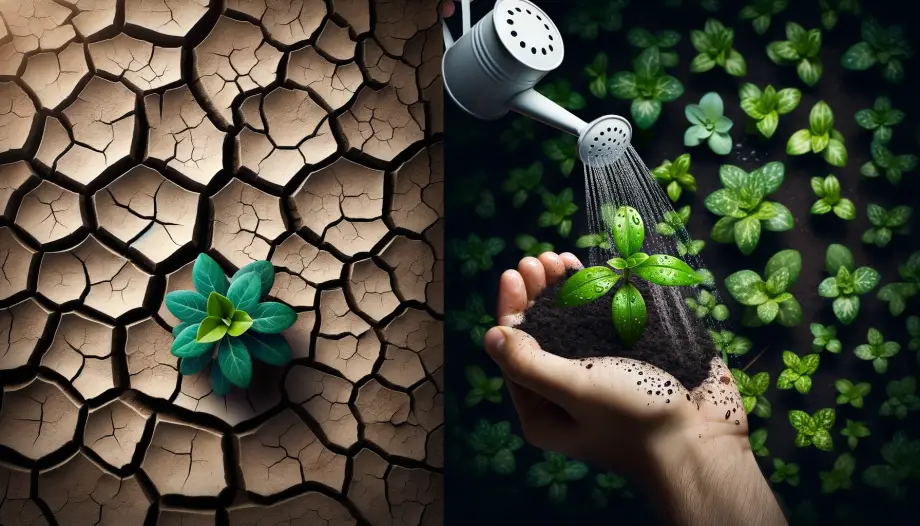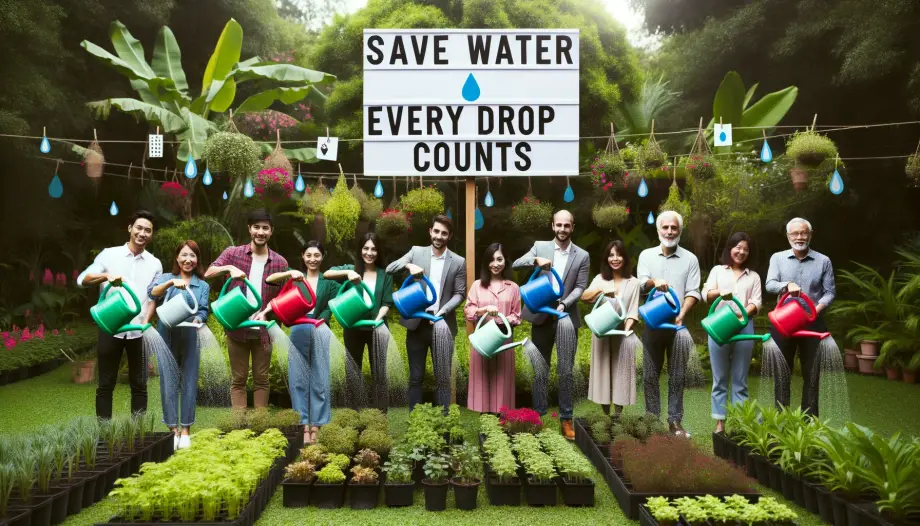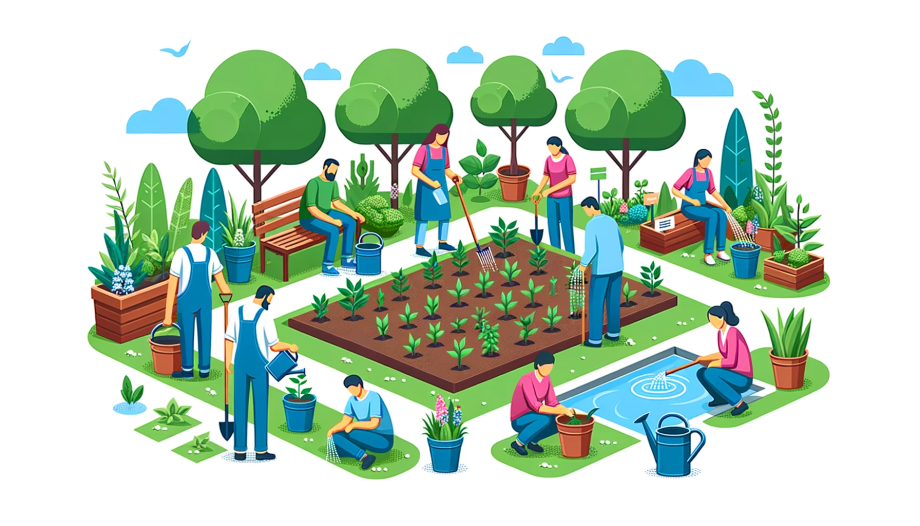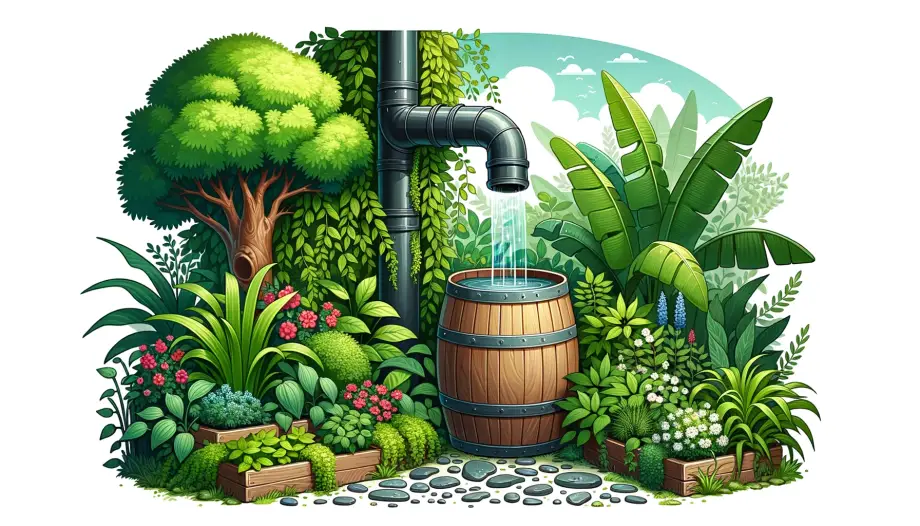
Let’s dive into the rewarding benefits of rainwater harvesting and explore how it not only contributes to water conservation but also presents a plethora of other benefits.
This sustainable practice is akin to hitting a sweet jackpot in the realm of eco-friendliness and economy.
Rainwater Harvesting Key Takeaways:
- The benefits of rainwater harvesting are manifold.
- It conserves water by capturing rainwater, reduces the demand on municipal water supply.
- It lowers water bills and lessens the impact of stormwater runoff.
- Additionally, it promotes sustainable water management, provides an alternative water source during droughts, and fosters environmental awareness.
What is Rainwater Harvesting
Imagine a method that not only conserves water but also saves money and benefits the environment.
This isn’t a modern-day marvel, but a practice as ancient as civilization itself.
Discover the benefits of rainwater harvesting, a simple yet profound way to tap into nature’s bounty.
It’s like having a miniature reservoir right in your backyard, ready to quench your garden’s thirst and contribute to a greener planet.
Rainwater harvesting (RWH) is the collection and storage of rain, rather than allowing it to run off. Rainwater is collected from a roof-like surface and redirected to a tank, cistern, deep pit (well, shaft, or borehole), aquifer, or a reservoir with percolation, so that it seeps down and restores the ground water. From Wikipedia
Benefits of Rainwater Harvesting for Water Conservation
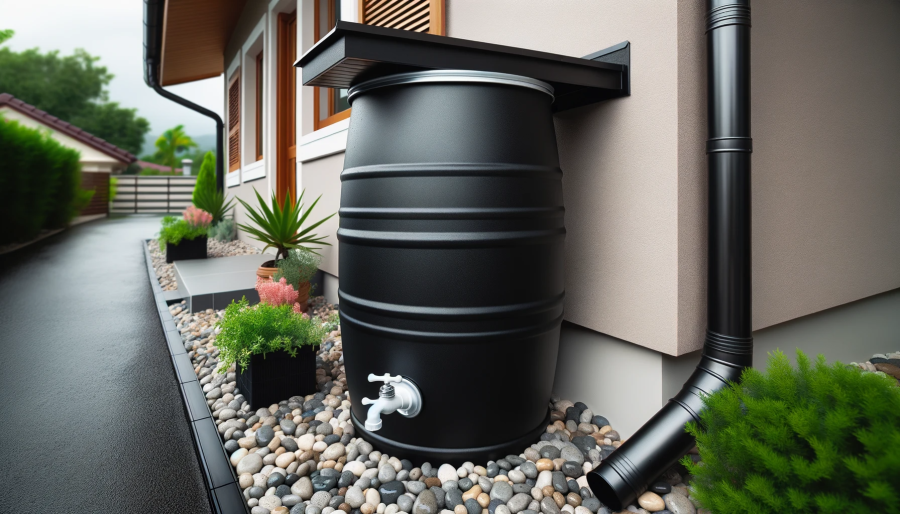
Rainwater harvesting is a simple yet ingenious method of collecting, storing, and utilizing the rainwater that falls on your property.
This ancient practice is having a modern-day renaissance due to its significant role in water conservation and sustainable living.
It’s like having your own water reservoir, ready to serve you, particularly when water becomes a scarce commodity during dry spells.
Economic Benefits of Rainwater Harvesting
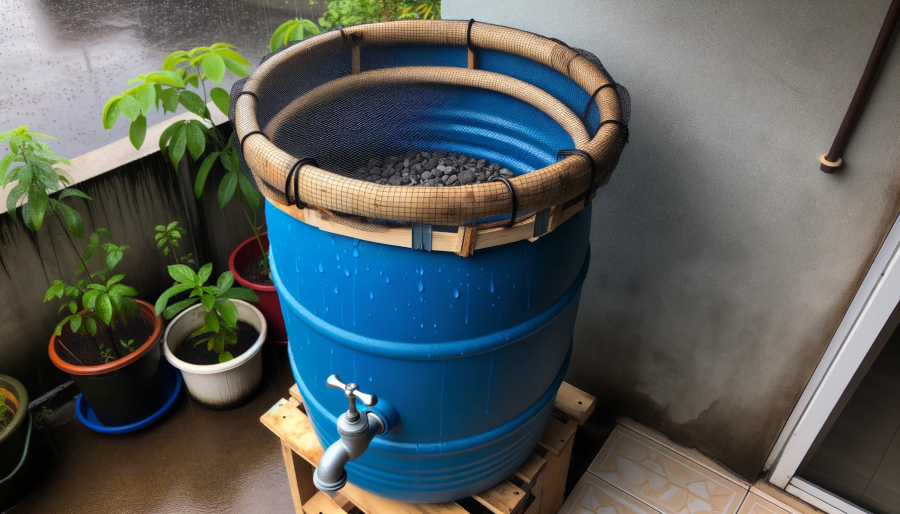
Dive into the economic aspect of rainwater harvesting, a practice that is as kind to your wallet as it is to Mother Earth.
Explore how collecting droplets from the sky can lead to substantial savings, create sustainable job opportunities, and foster a community of eco-conscious individuals.
The economic benefits of rainwater harvesting are indeed a ripple effect of goodness.
Cost-Effectiveness
- The charm of rainwater lies in its cost-effectiveness, acting like a mini treasure falling from the sky.
- Unlike municipal water which comes with a price tag, rainwater is a free resource awaiting collection.
- By installing a simple rainwater harvesting system, you unlock a stream of savings that are reflected in your lowered water bills.
- Over time, these savings can accumulate to a significant amount, making rainwater harvesting not just an eco-friendly choice, but a financially savvy one too123.
- It’s like giving a friendly nod to your wallet, every time the sky opens up.
Energy Efficiency
- Shifting the focus towards rainwater doesn’t just quench the thirst of your garden, but also curtails the energy guzzled in treating and pumping municipal water.
- Every drop of rainwater used is a drop of municipal water saved, along with the energy that would have been expended to make it usable.
- This simple transition towards rainwater harvesting can lead to a noticeable reduction in the community’s energy footprint, contributing to a larger narrative of energy conservation3.
- It’s a gentle step towards easing the load on our energy resources, making rainwater harvesting a friend not just of the earth, but of the energy sector too.
Sustainable Jobs
- The realm of rainwater harvesting is fertile ground for green job opportunities.
- The need for designing, installing, and maintaining rainwater harvesting systems can kindle a green job revolution, providing sustainable employment opportunities in a world leaning towards eco-friendliness.
- Every new system installed is a call for skilled hands, whether it’s for design, installation, or maintenance, and paves the way for a new sector of employment that’s rooted in sustainability3.
- It’s a budding industry with a promise of growth, nurturing both the economy and the environment in a single sweep.
Environmental Benefits

Unveiling the environmental benefits of rainwater harvesting leads us to a realm where every droplet counts.
By harnessing rainwater, we are not only conserving a precious resource but also combating stormwater runoff and erosion—small steps towards a significant impact.
It’s about creating harmony between nature and our water usage, ensuring a greener, healthier planet.
Water Conservation
- The act of collecting rainwater is a simple yet impactful stride towards water conservation.
- When we harvest the rain, we ease the burden on our local water supply, making a dent in the demand for this precious resource.
- It’s like having a mini reservoir at home, capturing what nature offers and reducing the necessity to tap into municipal supplies.
- This practice is particularly beneficial in regions where water is scarce or during times of drought, ensuring a steady supply of water for non-potable uses.
- The beauty of this action lies in its simplicity and the ripple effect it creates towards a water-efficient community1.
Stormwater Management
- When rainwater is left unharvested, it rushes along streets and over fields, becoming stormwater runoff that carries with it soil, pesticides, and other pollutants, eventually dumping them into our water bodies.
- By harvesting rainwater, we act like sponges, soaking up this runoff before it becomes a problem.
- This not only lowers the risk of erosion but also decreases the contamination of rivers and lakes with harmful substances.
- The outcome is twofold: we conserve water and protect our water bodies from pollution, ensuring a healthier environment for both aquatic life and humans23.
Erosion Control
- In regions where the land often battles with floods and erosion, rainwater harvesting systems emerge as silent warriors.
- By capturing rainwater, these systems control the flow of water, reducing the onslaught on the soil.
- This aids in water management and significantly curtails soil erosion, which in turn, preserves the landscape and prevents degradation of land.
- It’s a proactive measure that not only conserves water but also guards the integrity of the land, making rainwater harvesting a boon for erosion-prone areas.
- The positive impact extends to preventing the loss of topsoil and safeguarding local ecosystems.
- It shows that every drop harvested is a step towards a stable and sustainable environment1.
Practical Benefits

Embracing the practical benefits of rainwater harvesting is like having a personal water reservoir at your disposal.
Whether it’s nurturing your garden, having a backup during emergencies, or being resilient during droughts, rainwater harvesting is a real-world solution.
It’s about making the most of natural resources, effortlessly blending sustainability with practicality.
Drought Resilience
- A rainwater harvesting system is like having a water savings account for dry days.
- When clouds become stingy and the land parched, having a stash of rainwater can be a significant relief.
- It provides a sense of security and sustainability, ensuring that the essential water needs are met even during unforgiving dry spells.
- It’s not just about having an alternative water source; it’s about being resilient in the face of drought, a reality many regions face with increasing frequency due to climate change.
- By harnessing rainwater, households and communities create a buffer against drought, ensuring that life continues with minimal disruption even when water becomes scarce1.
Emergency Water Supply
- Emergencies are unpredictable, and having a reliable water source during such times can be a lifesaver.
- A rainwater harvesting system serves as a trusty backup, ensuring water availability when it’s needed the most.
- Whether it’s a municipal water outage or a natural disaster, having access to stored rainwater can provide a critical lifeline.
- While harvested rainwater may require treatment before being potable, it’s an invaluable resource for flushing toilets, washing, and irrigation during emergencies.
- It’s about being prepared and having an alternative when the usual water supply systems falter2.
Garden and Landscape Irrigation
Your garden is a living testament to the natural world, and what better way to nurture it than with natural, chemical-free rainwater?
Unlike treated municipal water, rainwater is devoid of chemicals like chlorine and fluorides, making it a much preferred choice for irrigation.
It’s gentle on the plants, promoting healthier growth, and vibrant, verdant landscapes.
Moreover, using rainwater for irrigation is a smart way to reduce your water bills while ensuring your garden flourishes.
It’s about creating a lush oasis right in your backyard, with the help of the sky’s bounty, leading to not just a beautiful garden but a small personal step towards water conservation and sustainability3.
Social and Educational Benefits
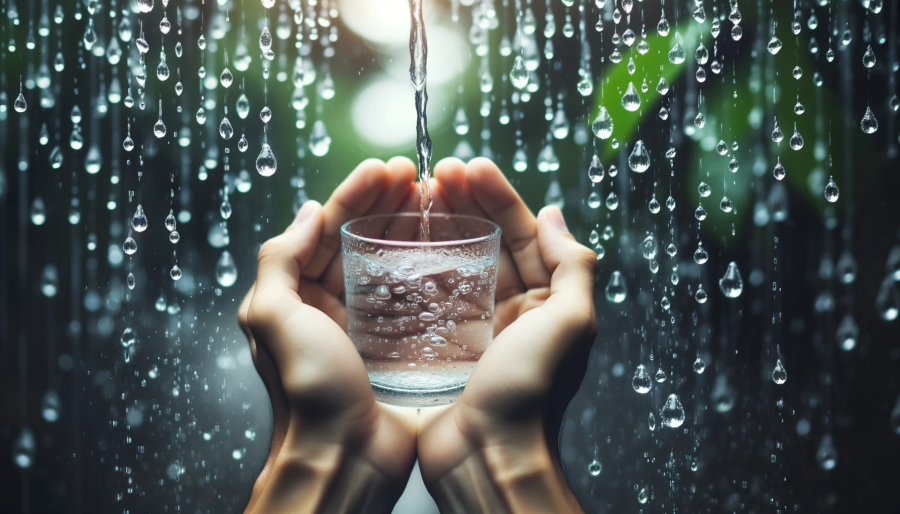
Diving into the social and educational benefits of rainwater harvesting unfolds a narrative of community enlightenment and responsible living.
Community Enlightenment and Responsible Living
Diving into the social and educational benefits of rainwater harvesting unfolds a narrative of community enlightenment and responsible living.
This eco-friendly practice not only whispers the ethos of conservation but also loudly educates communities on mindful water usage.
It’s a societal shift, nurturing a culture of awareness and sustainability, one drop at a time.
A Real-Time Lesson in Conservation
Rainwater harvesting serves as a brilliant eye-opener, shedding light on the often-overlooked aspect of water conservation.
It’s like having a real-time, tangible lesson in how water, a seemingly abundant resource, is actually a precious commodity.
Mindfulness and Appreciation
By engaging in rainwater harvesting, individuals and communities become more mindful of their water usage patterns, leading to a deeper understanding and appreciation of water’s value.
The practice transforms abstract concepts of conservation into daily, actionable habits.
Reflective Consumption
It prompts a reflection on water consumption, nudging people to think before they turn on the tap.
The visual impact of seeing a rainwater tank fill up during a downpour and gradually deplete as water is used, provides a clear insight into water availability and usage.
It’s a straightforward yet powerful way to educate on the principles of sustainability.
Broader Conversations on Sustainability
Furthermore, communities engaging in rainwater harvesting often find themselves part of a larger conversation about sustainable living.
It fosters a sense of collective responsibility towards water conservation, creating a ripple effect of awareness and action.
Educational Hubs
Schools, neighborhoods, and community centers equipped with rainwater harvesting systems become hubs of learning, where the simple act of collecting rainwater sparks discussions on broader environmental issues.
Moreover, the dialogue doesn’t stop at water conservation. It extends to energy savings, pollution reduction, and fostering a green culture.
Catalyst for Environmental Mindfulness
Rainwater harvesting acts as a catalyst, propelling communities towards a path of environmental mindfulness.
At its core, rainwater harvesting is a practice rooted in awareness, education, and action.
Journey Towards Sustainable Living
It’s an enriching journey that begins with collecting drops of rain and leads to a sea of change in attitudes towards water conservation and sustainable living.
Through rainwater harvesting, individuals and communities are not just saving water; they’re nurturing an ethos of conservation that has the potential to transcend beyond water, creating a sustainable blueprint for the future.
Technical Aspects of Rainwater Harvesting
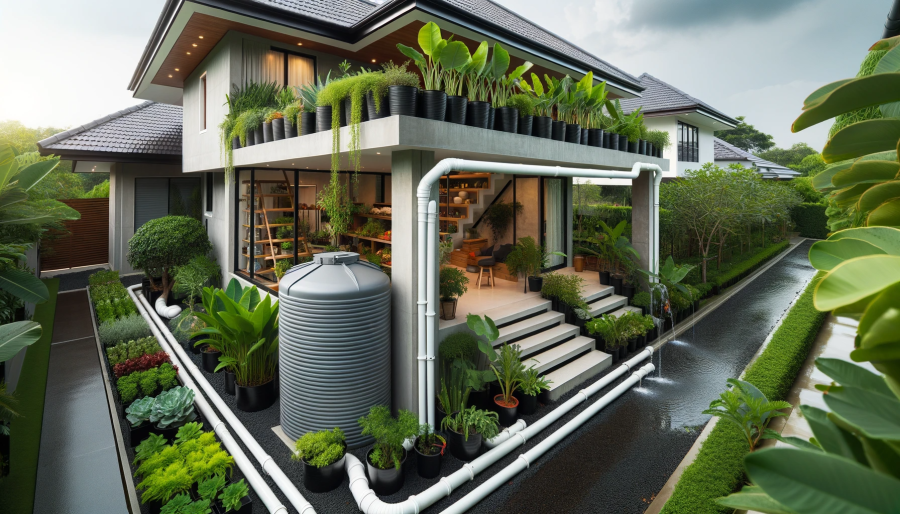
Delving into the technical aspects of rainwater harvesting unveils a fascinating blend of simplicity and sophistication.
It’s about channeling nature’s bounty through a well-designed system straight to your tap.
Explore the mechanisms of collection, filtration, and storage that make harvesting rainwater a viable and rewarding venture for any household.
- The technical realm of rainwater harvesting systems is where engineering meets environmental stewardship. It’s a well-orchestrated play of various components working in harmony to capture, clean, and channel rainwater for our use.
-
Collection Systems:
- The first act on the stage is the collection of rainwater. This involves a setup where rooftops or other catchment areas play the lead role.
- Gutters, downspouts, and conduits are meticulously designed to capture and transport rainwater with minimal loss.
- It’s about creating a seamless pathway from the sky to the storage, ensuring every droplet is accounted for.
- Filtration Mechanisms:
- Before the collected rainwater is ready for use, it takes a detour through the filtration town.
- Various filtration mechanisms are employed to ensure the water is clean and devoid of debris, leaves, or any other impurities.
- This step is crucial to ensure the quality of water, making it suitable for non-potable uses, and with further treatment, even potable uses.
- Storage Solutions:
- The final act is the storage of this liquid gold. Rainwater harvesting systems come with storage solutions that range from simple barrels to sophisticated underground cisterns.
- The choice of storage depends on the volume of water to be stored, the space available, and the intended use of the harvested rainwater.
- It’s about having a reliable reservoir waiting to serve whenever needed.
- Treatment and Distribution:
- For those looking to up the ante, additional treatment processes can be employed to make harvested rainwater potable.
- Once treated, a distribution system ensures the water reaches where it’s needed, be it your garden, toilet, or even the kitchen tap.
- Monitoring and Maintenance:
- Like any well-oiled machine, a rainwater harvesting system requires regular monitoring and maintenance.
- This includes cleaning the gutters, checking the filtration system, and ensuring the water storage tanks are in good condition.
- It’s about keeping the system running smoothly, and ensuring a steady supply of water.
- Legal and Regulatory Compliance:
- Navigating the legal landscape is also part of the technical realm.
- Adhering to local regulations and obtaining necessary permits is crucial to ensure your rainwater harvesting system is compliant.
-
The technical aspects of rainwater harvesting are a blend of practical engineering and environmental mindfulness.
The advantages of rainwater systems are about designing a system that not only collects and stores water efficiently but does so in a manner that is sustainable, compliant, and beneficial in the long run1.
Through understanding and implementing the technical nuances, individuals and communities can unlock the full potential of rainwater harvesting, making it a viable and valuable part of modern water management.
The Advantages of Rainwater FAQs
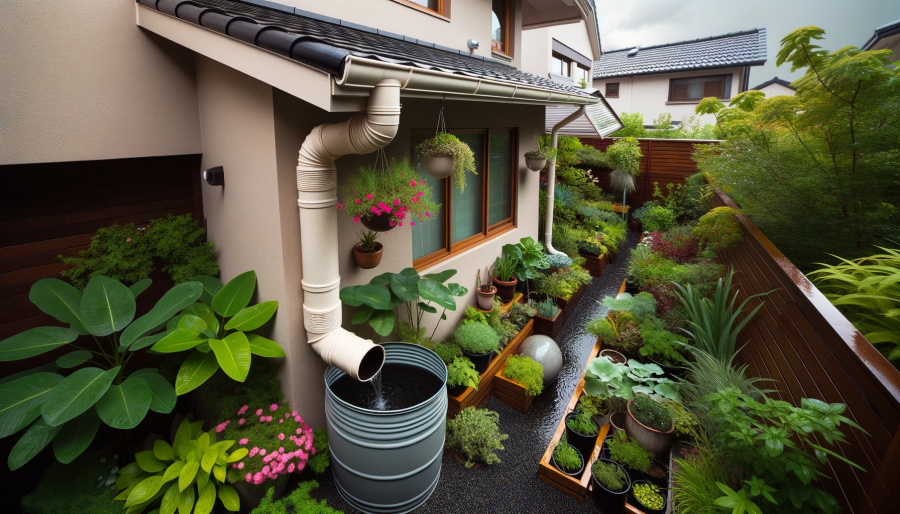
Navigating through the FAQs section sheds light on the common curiosities surrounding rainwater harvesting.
From its basic premise to its broader impact, this section aims to quench your thirst for knowledge.
It’s a pathway to understanding the nitty-gritty of this eco-friendly endeavor, answering the whispers of wonder with facts and clarity.
-
What is the primary purpose of rainwater harvesting?
- The primary purpose is to collect, store, and utilize rainwater, reducing dependency on municipal water and promoting water conservation.
-
Can harvested rainwater be used for drinking?
- Yes, with proper filtration and treatment, harvested rainwater can be made safe for drinking.
-
How does rainwater harvesting benefit the community?
- It reduces water demand, lowers energy consumption, and can foster green job opportunities.
-
What are the environmental benefits of rainwater harvesting?
- It helps in reducing stormwater runoff, managing erosion, and promoting a healthier environment by conserving water.
VIII. Conclusion

Embracing rainwater harvesting is like opening a gateway to sustainable living.
The myriad benefits spanning economic, environmental, and practical spheres make it a worthy endeavor.
It’s a call to blend ancient wisdom with modern technology for a water-secure and eco-friendly tomorrow.
Embarking on the journey of rainwater harvesting is akin to becoming a steward of nature’s liquid bounty.
This simple act of collecting rain precipitates a ripple effect of benefits, making it a cornerstone for sustainable living.
Community Empowerment:
The practice of rainwater harvesting fosters a sense of community empowerment.
When individuals and neighborhoods take charge of their water resources, a collective consciousness toward sustainable living emerges.
It’s a small yet powerful stride towards reducing the strain on local water supplies and promoting self-sufficiency.
Environmental Stewardship:
Embracing rainwater harvesting is a testament to environmental stewardship.
It’s a tangible step towards preserving our ecosystems, minimizing stormwater runoff, and reducing the carbon footprint associated with water treatment and distribution.
This practice beckons a greener future, nurturing a harmonious relationship between humanity and nature.
In wrapping up, rainwater harvesting isn’t merely about collecting water; it’s a lifestyle choice resonating with the ethos of conservation and community resilience.
It’s an invitation to be part of a larger narrative, one that values the essence of nature and propels us toward a sustainable and water-secure future.

